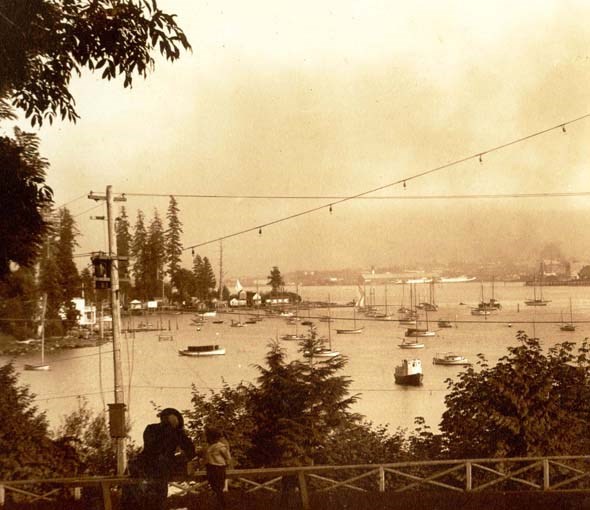A Vancouver time travelogue brought to you by Past Tense.
For much of Vancouver’s history, the shores surrounding the city was home to squatters living in houseboats and cabins. Burrard Inlet’s most famous squatter was Malcolm Lowry, who wrote much of his classic novel Under the Volcano in his Dollarton cabin, and the houseboat lifestyle was fictionalized on the Vancouver-shot TV series MacGyver. Most squatter’s lived less glamourous lives, but nevertheless were easily romanticized by outsiders.
A journalist for British Columbia Magazine ventured down to Coal Harbour early in 1911 for a story on the squatter colony there. Most of them refused to speak with him: “The waterfront amphibian, if he may be so called, is a man of much reticence, he can be silent in at least two languages – Chinook and coast English,” he wrote, but was nevertheless able to describe some of the characters he found.
There were Giki, the Japanese, and Nook, the Siwash, whose tribes dovetailed in the far-off past; Jann Singh, the Punjabi; Fung Kow, the Pekinese; Rocambeau, the ear-ringed French seaman; Olaf, the son of Olaf, the hay-colored Souwegian, “ban sailorman”; Hans Blamm, the Dutch fo’mast hand; Dirk Bolt, the English bo’sun with the blue and red tattooing on his carbonadoed hide; and Jake Dogg, the harbor pirate, all of that breed of men the world nails to its crosses.
Jake Dogg was the most chatty of the lot, according to the writer, and also one of the more colourful squatters. He was a “living storybook whose chapters are strange ports in every longitude and whose illustrations shipwrecks, shanghai-ings and romantic sea-devilry round the world.”
The British Columbian came up with all kinds of terms to describe the squatters. They were picturesque, indolent, non-conformist, “harbor hoboes,” “waterfront tramps,” “fortune’s footballs,” and “water vagabonds,” but the writer failed to pin them down to a single characterization. Some were rumoured to make money by cutting open log booms, stealing the logs, and then, “with the proper admirable nerve of the buccaneer,” selling them back to the sawmills. Others were pensioners, beachcombers, or smugglers, while still others held regular jobs and were quite respectable, or at least as respectable as readers of the British Columbian would be if they slept in their clothes and “played cribbage most of the day instead of working.” All were dirty-faced and unshaven and “wonderfully individual.”
Source: Coal Harbour, ca. 1910, City of Vancouver Archives #1376-80.03 (cropped).




